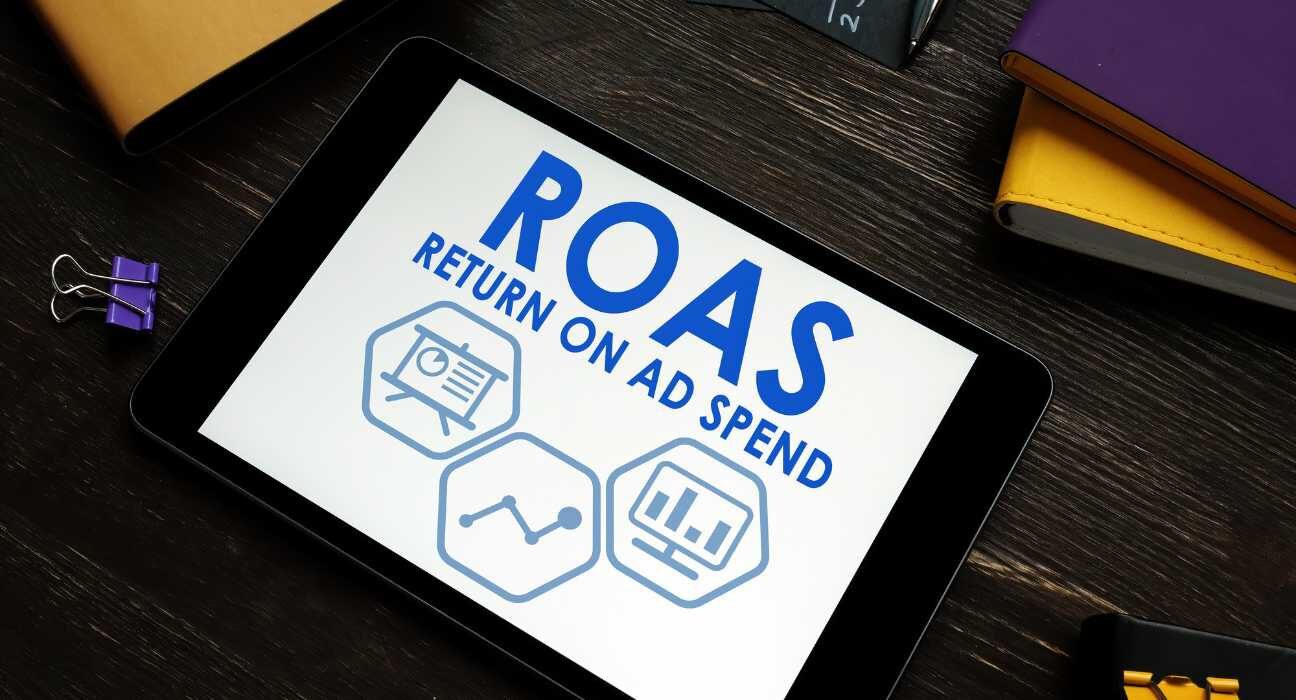In today’s digital age, advertising is a critical component of business success. But with so many advertising channels available, it can be challenging to determine which ones are generating a positive return on investment (ROI). That’s where ROAS Calculator comes in – it’s a metric that helps businesses measure the effectiveness of their advertising campaigns by determining how much revenue is generated for every dollar spent on advertising. First up, let’s have a look at the ROAS Calculator.
ROAS Calculator : Measure Return on Ad Spend
What it means:



In this article, we’ll cover everything you need to know about ROAS Calculator, including its meaning, formula, importance, factors influencing it, and how to improve it across different channels. We’ll also explore best practices for driving high ROAS, industry benchmarks, and the difference between ROAS and ROI.
So, let’s dive in!
Return on Advertising Spend aka ROAS Meaning
ROAS is a metric used by marketers and advertisers to measure the effectiveness of their advertising campaigns. It is calculated by dividing the revenue generated by an advertising campaign by the amount spent on that campaign. The resulting number represents the amount of revenue generated for every dollar spent on advertising.
ROAS Formula
The formula for ROAS Calculator is relatively simple. To calculate it, divide the revenue generated by an advertising campaign by the cost of that campaign. The resulting number will represent the ROAS of that campaign.
ROAS = Revenue Generated / Cost of Advertising
Importance of ROAS Calculator
ROAS is essential for businesses to track because it allows them to measure the success of their advertising campaigns. By tracking ROAS, businesses can determine which campaigns are generating the most revenue and which are not performing as well. This information can help businesses optimize their advertising campaigns and allocate their advertising budgets more effectively.
Additionally, ROAS Calculator is also crucial because it allows businesses to determine their return on investment (ROI) for advertising. By tracking ROAS, businesses can determine whether their advertising campaigns are generating enough revenue to justify their advertising spend. If the ROAS is low, the business may need to re-evaluate its advertising strategy or reduce its advertising spend.
Factors Influencing ROAS Calculator
Several factors can influence ROAS Calculator. The first factor is the targeting of the advertising campaign. If the advertising campaign is targeted to the wrong audience, it is less likely to generate revenue. Businesses need to ensure that they are targeting their advertising campaigns to the right audience to maximize their ROAS.
Another key factor that can influence ROAS Calculator is the ad copy and creative. The ad copy and creative need to be compelling and resonate with the audience to generate revenue. Businesses need to ensure that their ad copy and creative are well-crafted and engaging to maximize their ROAS.
Additionally, The third factor that can influence ROAS Calculator is the landing page. If the landing page is not optimized for conversions, it can negatively impact ROAS. Businesses need to ensure that their landing pages are optimized for conversions to maximize their ROAS.
Finally, The fourth factor that can influence ROAS Calculator is the competition. If the competition is intense, it can be challenging to generate revenue, and ROAS may be lower. Businesses need to be aware of their competition and ensure that they are offering a unique value proposition to maximize their ROAS.
How to Improve ROAS in Different Channels
ROAS can be improved in different channels by taking specific actions. Here are some strategies that businesses can use to improve their ROAS in different channels:
Search Engine Advertising:
• Optimize keywords and ad copy for relevance and quality
• Use negative keywords to prevent irrelevant clicks
• Optimize landing pages for conversions
• Implement ad extensions to provide additional information and increase click-through rates
Social Media Advertising:
• Target specific audiences based on demographics, interests, and behaviors
• Use eye-catching visuals and videos to grab attention
• Test different ad formats and placements to find the best-performing ones
• Optimize landing pages for conversions
Display Advertising:
• Target specific audiences based on demographics, interests, and behaviors
• Use eye-catching visuals and videos to grab attention
• Test different ad formats and placements to find the best-performing ones
• Use retargeting to reach people who have already shown interest in the product or service
Best Practices for Driving High ROAS
To drive high ROAS, businesses need to follow certain best practices. Here are some best practices for driving high ROAS:
1. Set clear advertising goals: Businesses need to define their advertising goals and align them with their overall business goals. This will help them to focus their advertising efforts and measure their ROAS more effectively.
2. Target the right audience: Businesses need to ensure that their advertising campaigns are targeted to the right audience. This will help to maximize the ROAS by reaching the people who are most likely to convert.
3. Use compelling ad copy and creative: Ad copy and creative should be compelling and resonate with the audience. Businesses need to ensure that their ad copy and creative are well-crafted and engaging to maximize their ROAS.
4. Optimize landing pages for conversions: Landing pages need to be optimized for conversions to maximize ROAS. This includes having a clear call-to-action and ensuring that the page is user-friendly and easy to navigate.
5. Test and optimize: Businesses should continuously test and optimize their advertising campaigns to maximize their ROAS. This includes testing different ad formats, placements, and targeting options to find the best-performing ones.
ROAS Benchmark by Industry
ROAS benchmarks can vary significantly by industry. Here are some ROAS benchmarks for different industries:
• E-commerce: 4:1 or higher
• Retail: 2:1 or higher
• Healthcare: 3:1 or higher
• Finance: 5:1 or higher
• Technology: 7:1 or higher
• Travel: 5:1 or higher
It is important to note that these benchmarks can vary depending on the specific business and the advertising channels used. Businesses should aim to achieve a ROAS that is higher than their industry benchmark to ensure that their advertising campaigns are generating a positive return on investment.
Basis my experience, I prefer the campaigns to have a 7:1 ROAS, and if it is below that, there is always a room for improvement.
ROAS vs ROI
ROAS and ROI are both important metrics for businesses to track, but they measure different things. ROAS measures the revenue generated for every dollar spent on advertising, while ROI measures the overall return on investment for a business.
Specifically, ROI takes into account all costs associated with a business, including the cost of goods sold, operating expenses, and taxes. ROAS only measures the revenue generated from advertising and does not take into account all costs associated with a business.
Therefore, While both metrics are important, businesses should use them in conjunction with each other to get a complete picture of their advertising effectiveness and overall business performance.
Conclusion: ROAS Calculator
ROAS is a critical metric for businesses to track to measure the effectiveness of their advertising campaigns. By tracking ROAS, businesses can determine which campaigns are generating the most revenue and which are not performing as well. They can then optimize their advertising campaigns and allocate their advertising budgets more effectively to maximize their ROAS.
To improve ROAS with ROAS Calculator, businesses need to ensure that they are targeting the right audience, using compelling ad copy and creative, optimizing landing pages for conversions, and continuously testing and optimizing their advertising campaigns.
Even though, ROAS benchmarks can vary significantly by industry, and businesses should aim to achieve a ROAS that is higher than their industry benchmark to ensure that their advertising campaigns are generating a positive return on investment.
While ROAS Calculator is important, businesses should use it in conjunction with other metrics, such as ROI, to get a complete picture of their advertising effectiveness and overall business performance.
If you’re interested in learning more about digital marketing metrics, check out our article on the key digital marketing metrics every business should track.











